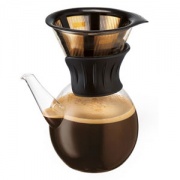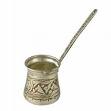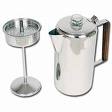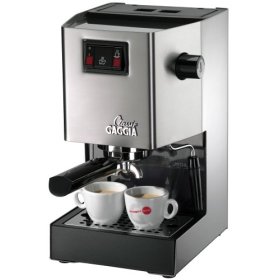Coffee
Coffee Species
Of the two main species grown, arabica coffee (from C. arabica) is generally more highly regarded than robusta coffee (from C. canephora).
Robusta tends to be bitter and have less flavour but better body and more caffeine than arabica, but is less susceptible to disease than arabica and can be cultivated in lower altitudes and warmer climates. Good quality robusta beans are used in some espresso blends to provide a full-bodied taste, a better foam head known as crema, and to lower the ingredient cost. About three-quarters of coffee cultivated worldwide is C. arabica.
Coffee Regions
Arabica coffee beans are cultivated in Latin America, eastern Africa, Arabia, or Asia.
Robusta coffee beans are grown in western and central Africa, throughout southeast Asia, and to some extent in Brazil.
Beans from different countries or regions can usually be distinguished by differences in flavour, aroma, body, or acidity. These taste characteristics are dependent not only on the coffee's growing region, but also on genetic subspecies (varietals) and processing. Varietals are generally known by the region in which they are grown, such as Colombian, Java or Kona.
Colombian
Columbian coffee, also known as Colombian Mild, is characterised by its sweetness and soft terroir (the special geographically influenced characteristics that distinguish varieties). Only crops of Coffea arabica of Maragogype, Caturra, Typica and Bourbon cultivars, among others, are grown. When Colombian coffee is freshly roasted it has a bright acidity, is heavy in body and is intensely aromatic.
Java
In the United States, the term "Java" is slang for coffee generally, but Java coffee is produced on the island of Java and uses Arabica beans. Ripe coffee cherries are transferred quickly to their mills after harvest, where the pulp is fermented and washed off, using the wet process. This results in coffee with good, heavy body and a sweet overall impression. They are sometimes rustic in their flavour, but display a lasting finish. At their best, they are smooth and supple and sometimes have a subtle herbaceous note in the aftertaste.
This coffee is prized as one component in the traditional "Mocha Java" blend, which pairs coffee from Yemen and Java. Some estates age a portion of their coffee for up to three years. During this time, the coffee is "monsooned", by exposing it to warm, moist air during the rainy season. As they age, the beans turn from green to light brown, and the flavour gains strength while losing acidity. These aged coffees are called Old Government, Old Brown or Old Java.
The Indonesian phrase Kopi Jawa refers not only to the origin of the coffee, but is used to distinguish the strong, black, very sweet coffee, produced by a special roasting technique and a recipe that includes margarine and sugar as ingredients.
 Java is also a source of kopi luwak, renowned as the most expensive coffee in the
world. On Java, this variety is produced by feeding captive palm civets with ripe
coffee cherries. The digestive tract of the civet removes the mucilage from the coffee
beans.
Java is also a source of kopi luwak, renowned as the most expensive coffee in the
world. On Java, this variety is produced by feeding captive palm civets with ripe
coffee cherries. The digestive tract of the civet removes the mucilage from the coffee
beans.
Kona
Kona coffee is the market name for coffee (Coffea arabica) cultivated on the slopes of Hualalai and Mauna Loa in the North and South Kona Districts of the Big Island of Hawaii. This coffee has developed a reputation that has made it one of the most expensive and sought-after coffees in the world. Only coffee from the Kona Districts can be legally described as "Kona". Because of the rarity and price of Kona coffee, some retailers sell "Kona Blends". These are not a combination of different Kona coffees, but a blend of Kona and Colombian, Brazilian or other foreign coffees. Usually they contain only the minimum required 10% Kona coffee and 90% cheaper imported beans.
 To complicate things, there is also a Kona coffee machine - notably produced by Bodum.
This is a kind of bulbous filter machine, usually with a long teapot like spout.
To complicate things, there is also a Kona coffee machine - notably produced by Bodum.
This is a kind of bulbous filter machine, usually with a long teapot like spout.
Other Regions
ETHIOPIA is known as the place where the coffee bean originated, and is the top coffee and honey-producing country in Africa. Moderately bold or medium bodied flavour. Has a very strong coffee aroma. Not as mild as some coffee.
COSTA RICA COFFEE Known primarily as a classic roast. Has a moderate acidic level and is mild in taste. This coffee is good if you do not like a strong coffee but like great flavour.
GUATEMALA COFFEE Smokey almost spicy flavours with a medium body or moderate body.
KENYA COFFEE Finely acidic with a fruitiness in flavour. This coffee features a beautiful aroma and is simply an amazing breakfast blend as it is gently acidic.
NEW GUINEA COFFEE Moderately acidic coffee with a very strong aroma and full bodied with a deep distinct taste.
SULAWESI COFFEE Deeply rich full bodied coffee, bold in flavour and has an almost exotic feel to it.
SUMATRA COFFEE Bold blend of coffee or full bodied but low in acidity. Slightly spicy and a mild aroma.
Roasts
In general, lighter roasts are sharper and more acidic than the darker roasts; lighter roasts have a stronger flavour from the aromatic oils and acids destroyed by longer roasting times. Darker roasts have a fuller, sweeter flavour, with generally less caffeine, and are generally smoother because they have less fibre content. Beans that have been over-roasted will take on a burned, smoky or charcoal flavour.
The roast alone doesn't determine the resulting coffee taste or quality. The origin of the beans also makes a big difference.
Roasting coffee beans converts the starches into the aromatic oils which give the coffee its characteristic flavour. According with the type of roasting, from low roast to high roast, coffee beans can be classified as:
- Level: Cinnamon Roast. Aspect: Slightly roasted, Light cinnamon colour. features: Nut flavour, High acidity
- Level: American Roast. Aspect: Mid Roasted, Chestnut colour. Features: caramel flavour
- Level: City Roast. Aspect: Mid Roasted, medium brown, no oils on surface. features: Full coffee flavour, mid acidity.
- Level: Full City Roast. Aspect: Mid Roasted, medium-dark brown. Features: Full coffee flavour, low acidity
- Level: Vienna Roast. Aspect: Intense Roast, dark brown, traces of oil on surface. Features: Slightly bitter flavour
- Level: French Roast. Aspect: Intense Roast, dark brown-black, oily surface. features: Bitter flavour
- Level: Italian Roast. Aspect: Intense roast, bitter, black, oily surface. Features:Smoked flavour
- Espresso Roast. Aspect: Intense Roast, specific for espresso machines. features: Smoked sweet flavour. This is not an actual roast level, since there are many different styles to roast espresso from Full City to Italian.
Depending on the colour of the roasted beans as perceived by the human eye, they can also be labeled as light, medium light, medium, medium dark, dark, or very dark.
Storage
Once roasted, coffee beans must be stored properly to preserve the fresh taste of the bean. Ideally, the container must be airtight and kept cool. In order of importance: air, moisture, heat, and light are the environmental factors responsible for deteriorating flavour in coffee beans.
Folded-over bags, a common way consumers often purchase coffee, are generally not ideal for long-term storage because they allow air to enter, better packaging contains a one-way valve, which prevents air from entering.
Grinds
The type of grind is often named after the brewing method for which it is generally used. Turkish grind is the finest grind, while coffee percolator or French press are the coarsest grinds.
 Brewing
Brewing
Brewing coffee by boiling was the earliest method, and Turkish coffee is an example of this method. It is prepared by grinding or pounding the beans to a fine powder, then adding it to water and bringing it to the boil for no more than an instant in a pot called a cezve or, in Greek, a bríki. This produces a strong coffee with a layer of foam on the surface and sediment (which is not meant for drinking) settling on the bottom of the cup.
 Coffee percolators and automatic coffee makers brew coffee using gravity.
In an automatic coffee maker hot water drips onto coffee grounds held in a coffee
filter made of paper, plastic, or perforated metal (gold is thought to retain the
coffee flavour best as it draws out less oil than a paper filter),
allowing the water to seep
through the ground coffee while extracting its oils and essences.
The liquid drips through the coffee and the filter into a carafe or pot,
and the spent grounds are retained in the filter.
The Chemex coffee maker operates under a similar principle but uses only an hourglass
shaped flask.
Coffee percolators and automatic coffee makers brew coffee using gravity.
In an automatic coffee maker hot water drips onto coffee grounds held in a coffee
filter made of paper, plastic, or perforated metal (gold is thought to retain the
coffee flavour best as it draws out less oil than a paper filter),
allowing the water to seep
through the ground coffee while extracting its oils and essences.
The liquid drips through the coffee and the filter into a carafe or pot,
and the spent grounds are retained in the filter.
The Chemex coffee maker operates under a similar principle but uses only an hourglass
shaped flask.
 In a percolator, boiling water is forced into a chamber above a filter by steam
pressure created by boiling. The water then seeps through the grounds, and the
process is repeated until terminated by removing from the heat, by an internal timer,
or by a thermostat that turns off the heater when the entire pot reaches a certain
temperature. This thermostat also serves to keep the coffee warm (it turns on when
the pot cools), but requires the removal of the basket holding the grounds after
the initial brewing to avoid additional brewing as the pot reheats.
In a percolator, boiling water is forced into a chamber above a filter by steam
pressure created by boiling. The water then seeps through the grounds, and the
process is repeated until terminated by removing from the heat, by an internal timer,
or by a thermostat that turns off the heater when the entire pot reaches a certain
temperature. This thermostat also serves to keep the coffee warm (it turns on when
the pot cools), but requires the removal of the basket holding the grounds after
the initial brewing to avoid additional brewing as the pot reheats.
 Coffee may be brewed by steeping in a cafetière (also known as a French
or coffee press). Ground coffee and hot water are combined in a cylindrical
vessel and left to brew for a few minutes. A circular filter which fits tightly in the
cylinder fixed to a plunger is then pushed down from the top to force the grounds
to the bottom. Because the coffee grounds are in direct contact with the water,
all the coffee oils remain in the beverage, making it stronger and leaving more
sediment than in coffee made by an automatic coffee machine. The coffee is poured from
the container; the filter retains the grounds at the bottom. See here for a guide, or here for the Bodum instructions..
Coffee may be brewed by steeping in a cafetière (also known as a French
or coffee press). Ground coffee and hot water are combined in a cylindrical
vessel and left to brew for a few minutes. A circular filter which fits tightly in the
cylinder fixed to a plunger is then pushed down from the top to force the grounds
to the bottom. Because the coffee grounds are in direct contact with the water,
all the coffee oils remain in the beverage, making it stronger and leaving more
sediment than in coffee made by an automatic coffee machine. The coffee is poured from
the container; the filter retains the grounds at the bottom. See here for a guide, or here for the Bodum instructions..
The espresso method forces hot (but not boiling) pressurized water through ground coffee. As a result of brewing under high pressure (ideally between 9–10 atm), the espresso drink is more efficiently extracted and concentrated (as much as 10 to 15 times the quantity of coffee to water as gravity-brewing methods can produce) and has a more complex physical and chemical constitution. A well-prepared espresso has a reddish-brown foam called crema that floats on the surface.
 Both stovetop and electrical espresso machines are available. Another alternative, suitable for use at work or whilst travelling is the Aeropress.
Both stovetop and electrical espresso machines are available. Another alternative, suitable for use at work or whilst travelling is the Aeropress.
The moka pot, also known as a Moka, Bialetti, percolator or a stove-top coffee-maker, or in Italian "la Moka, la macchinetta" or la caffettiera ("small machine"); is a stove top espresso coffee maker, based on the principle of
preparing coffee with steam pressurized water. First patented by Alfonso Bialetti in 1933, his company continues to produce the same model also known as the "Moka Express".
Moka pots produce coffee similar to that of a conventional espresso machine, and can also create the same foam emulsion (crema). Moka pots require periodic replacement of the rubber seal and the filters and a check that the safety release valve is not blocked. A thin coat of oily coffee residue builds up on the lining of the interior of the pot - this protects the coffee from contact with the bare aluminium wall, which can give a slight metallic taste to the coffee
Coffee may also be brewed in cold water by steeping coarsely-ground beans in cold water for several hours, then filtering.
Click here for Gaggia Tips
Presentation
 Espresso-based coffee has a wide variety of possible presentations.
In its most basic form, it is served alone as a shot or in the more watered-down
style café américano—a shot or two of espresso with hot water added.
Reversing the process by adding espresso to hot water preserves the crema, and is known as a
long black.
Espresso-based coffee has a wide variety of possible presentations.
In its most basic form, it is served alone as a shot or in the more watered-down
style café américano—a shot or two of espresso with hot water added.
Reversing the process by adding espresso to hot water preserves the crema, and is known as a
long black.
Milk can be added in various forms to espresso: steamed milk makes a caffè latte, equal parts steamed milk and milk froth make a cappuccino, and a dollop of hot foamed milk on top creates a caffè macchiato.






